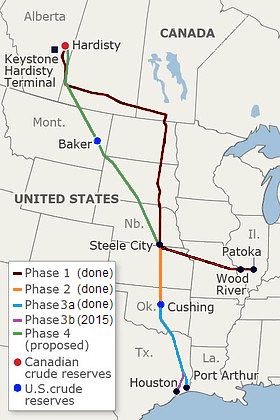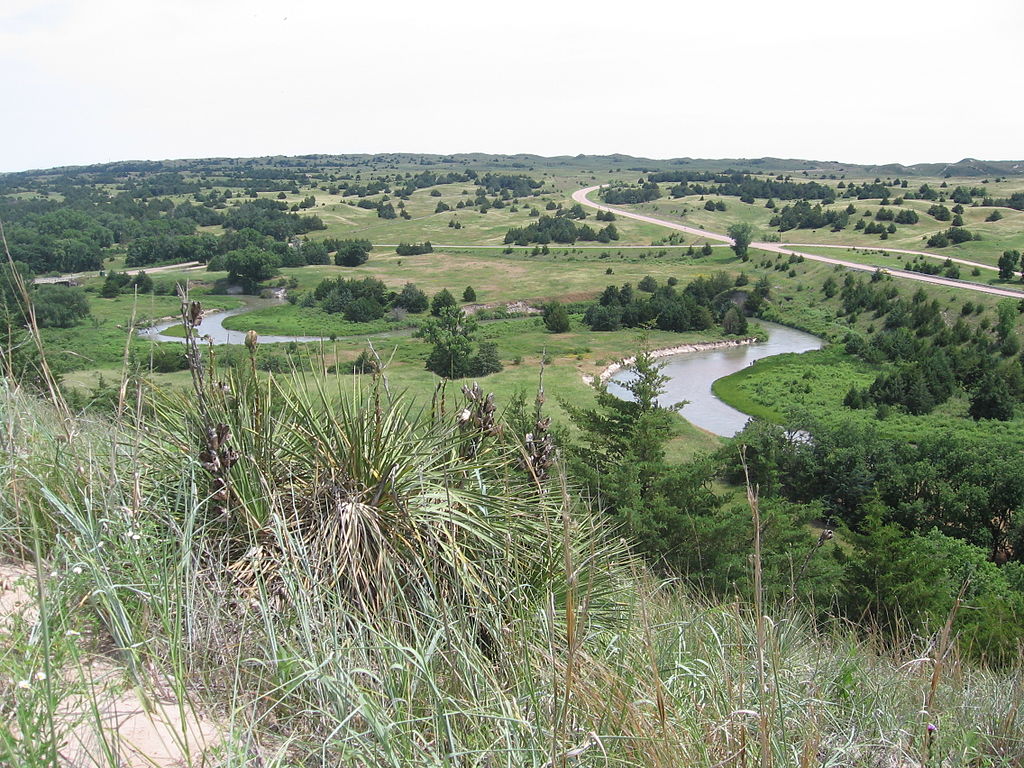Donald Trump, famed owner of small hands, sparked controversy across the US with his controversial first moves as the supposed leader of the free world. Among these included an executive order to revive TransCanada’s Keystone XL Project, despite previously being vetoed by Barack Obama over environmental concerns.

Keystone XL Project Summary
Keystone XL was first proposed in 2008 by TransCanada, who aimed to construct a 1179 mile pipeline extension from oil sands in Canada to Midwest US, doubling existing oil pipeline capacity.
Impact of the project could affect stakeholders from ‘The Donald’ himself to the Middle East, including the US government; oil companies both competing with and supplying to the pipeline; respective customers; US citizens current and future; and the environment.
Crossing an international border, the project requires a Presidential permit to go ahead, and Obama and Trump express contrasting opinions on the topic. But with complex environmental, social, economic and political concerns creating starkly polarised views, what would really be the best decision to make?
Approve The Keystone XL Pipeline Extension
Firstly, we could consider the decision using utilitarianism: if it results in the most ‘pleasure’ or minimum ‘pain’. Key debates have centred around potential environmental impact. Despite opposition from environmentalist groups, the Department of State 2014 Environmental Impact Statement concluded that the pipe would produce less emissions and have lower chances of accidents compared to trains or ships. An oil transporting train wiped out half a town in July 2013. It could be argued that building the pipe would be the most ethical resolution to this debate, as it invokes the least ‘pain’ on the environment.
Economically, the project could provide income for the US economy to the sum of $2 billion, whilst producing 42,000 private sector jobs. While the ethical theory of utilitarianism may support this outcome, when considering other stakeholders, such as companies competing with this supply, morally this judgement may not be justifiable.
Politically, it could also be argued that partnership with a ‘friendlier’ nation would invoke the most ‘pleasure’, supporting and strengthening relations with a fellow NATO power. Canada would benefit economically, and tensions could be eased over the issue, after TransCanada attempted to sue the US Government. The more geopolitically stable source would also reduce political obligations to other oil-supplying nations. The US would therefore be in less danger of shortage, and reducing their support to less ethical oil sources.
Kant’s deontological theory also reasons towards approval in considering rules, norms and laws. The project follows national laws as similar pipelines have seen completion across the United States. Indeed, the southern section of the Keystone Pipeline was successfully completed in 2014, with TransCanada CEO Russ Girling stating the advanced carbon steel pipe, “makes the pipeline the safest ever built”.
… with TransCanada CEO Russ Girling stating the advanced carbon steel pipe, “makes the pipeline the safest ever built”.
Modifying the pipe routing could also be considered, although an OES report studying two key alternative pipeline routes found ethically inferior results. One of these, the 2011 Steele City Segment, was found to have a worse impact on the land it crossed, creating large areas of highly erodible soil. Another, the I-90 Corridor, was found to closely pass more than double the number of communities, as well as requiring an additional 52 miles of pipe.
From a utilitarian perspective it seems neither of these rerouting options are ethical. The best routing options have already been explored and the current project proposal is the best option.
Reject The Keystone XL Pipeline Extension
There is a large, impassioned and aggressive movement against the construction of the Keystone XL pipeline. Why is this? Would the pipeline not use vast quantities of American steel? Would it not employ tens of thousands of American citizens? Would it not be perfectly safe? Unfortunately, it is not that simple.
To understand the fervent opposition to the pipe, we must turn the clock back to when it was first proposed: 2008. Immediately following the proposal submission, there was a backlash from environmentalists who were concerned that the proposed route would destabilize Nebraska’s beautiful and delicate Sandhills region.

The Sandhills region is a vast area of grass-stabilized sand dunes that sprawls 20,000 square miles across the state of Nebraska. The area is ecologically significant as it contains unique species of plants and animals, as well as geologically significant features such as an extremely shallow groundwater aquifer.
Environmentalists were bolstered in their protests against the pipeline in 2010 by response from the Environmental Protection Agency suggesting the environmental impact assessment of the pipeline was “unduly narrow” and required further study in regards to oil spill risks and greenhouse gas emissions. Another report written by engineer Dr. Stansbury of the University of Nebraska suggested that TransCanada’s spill risk estimates were approximately nine times lower than reality.
Deontologically speaking, as concluded earlier, TransCanada are doing nothing wrong. The laws of the country, however, are inherently immoral if presided over by a man such as Donald Trump, who is considered racist, sexist and professionally immoral by a large number of people. Virtue ethics fail to justify the construction, as the man making the decision is inherently unvirtuous.
The new administration has moved away from an environmental based energy policy to a job-creation based policy, but how many jobs will be created? TransCanada’s CEO stated that the project would be “putting 20,000 US workers to work”, however newer estimates have estimated as few as 3,900 direct jobs and only 35 permanent positions. Furthermore, Trump abandoned his promise that the pipeline would be built using American steel. White House Deputy Press Secretary, Sarah Sanders, stated: “Since this one is already currently under construction, the steel is already literally sitting there; it would be hard to go back”
The solution is unclear: there are many benefits to the pipeline extension, but also many risks. Are these benefits worth the risk, or is this project nearing obsoletion? Comment your thoughts below!
Group 34: Dan Cunningham, Dan Hearn, Patrick Downie, Qiangyu Dai

very good
LikeLike
Very detailed and critical explanation on the professional responsibilities of the Engineer in the society.
LikeLike
Very interesting and well written. The fact that the spill risk estimates were approximately nine times lower than reality is outrageous! I’d love to hear more from you guys about this topic.
LikeLike
Good viewpoints and detailed explanations were given. There are always pros and cons when planning a new type of engineering work. If we look at the long-term situation, maybe the pipelines are worth it after all. Engineers could design some sort of protection wraps, in order to avoid the oil spills.
LikeLike
Very well written overview.Only suggestion is that some measures should be taken to control the risk of pollution in the article, especially the spill of the pipe.
LikeLike